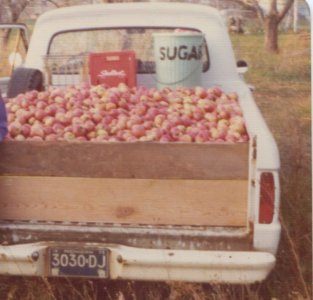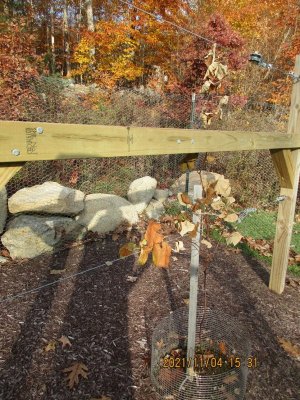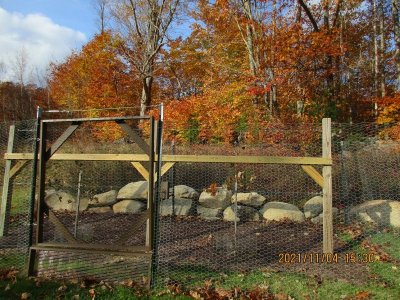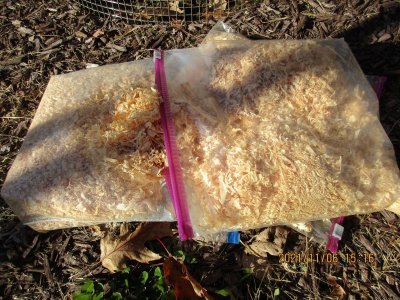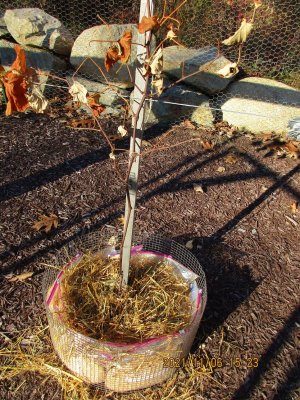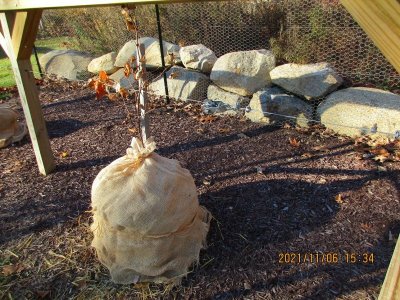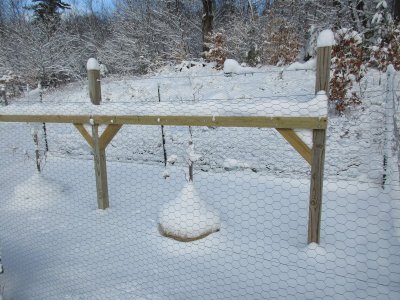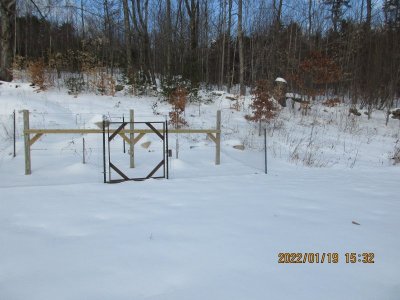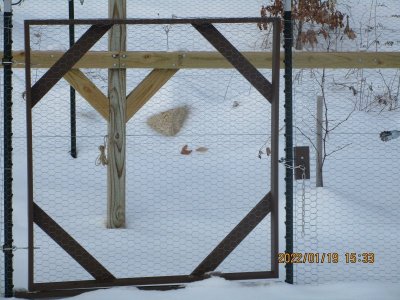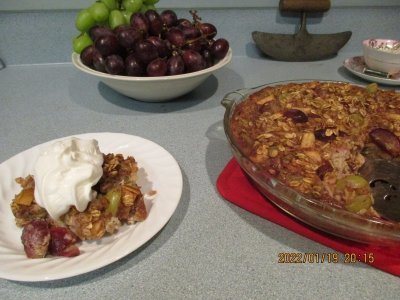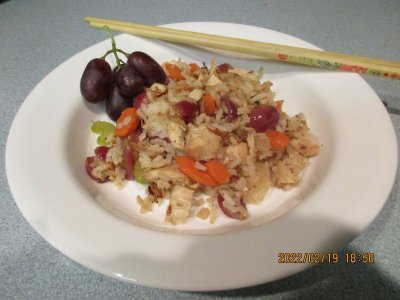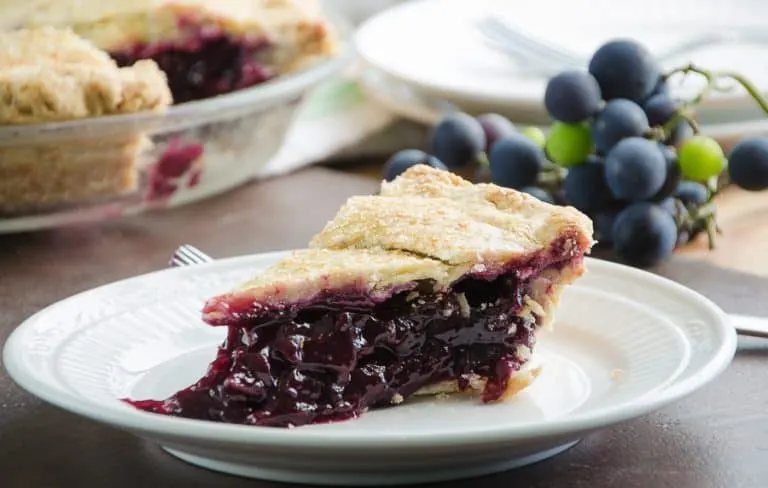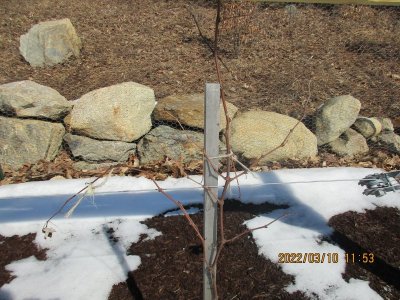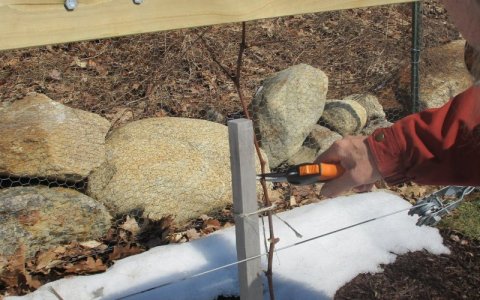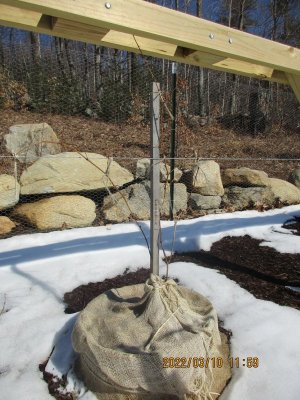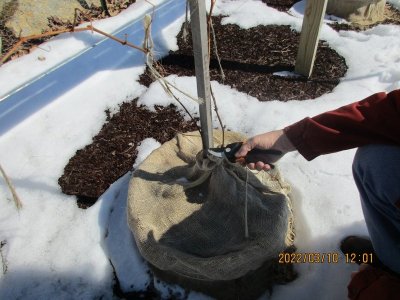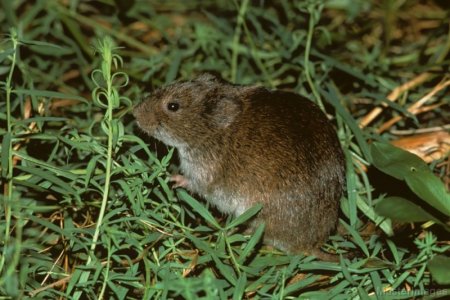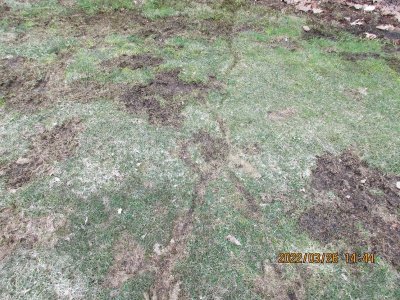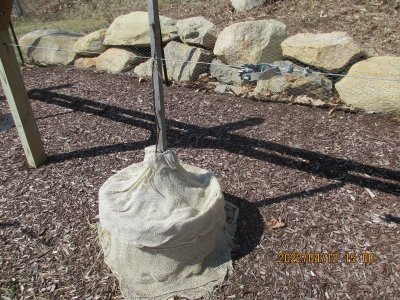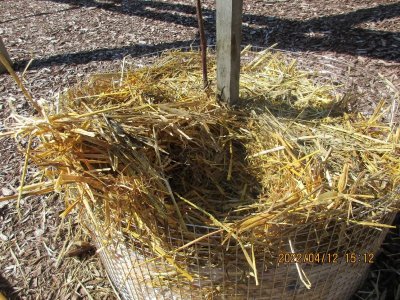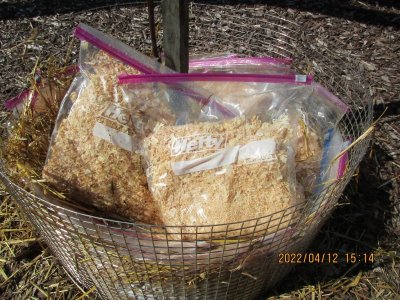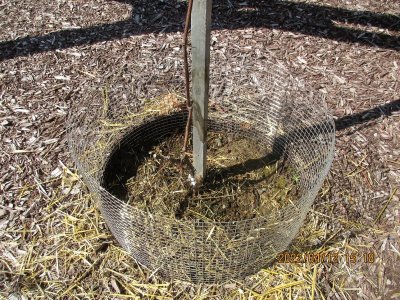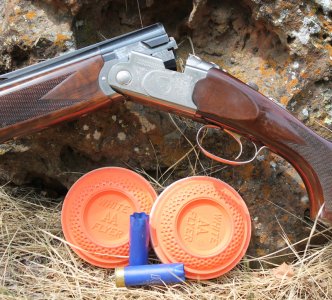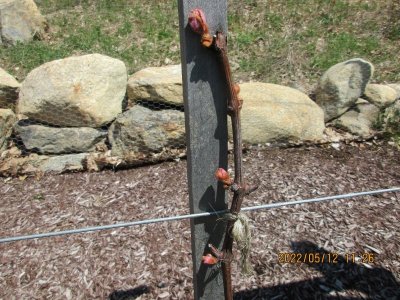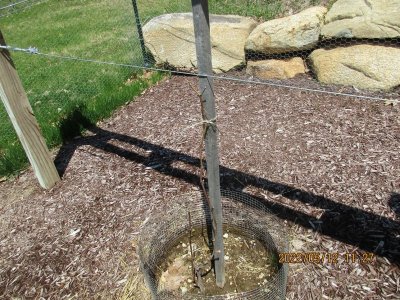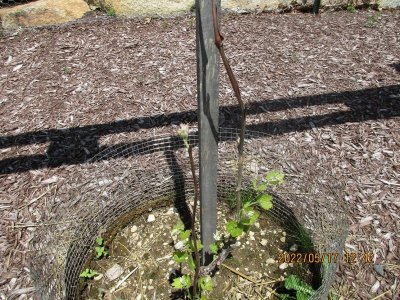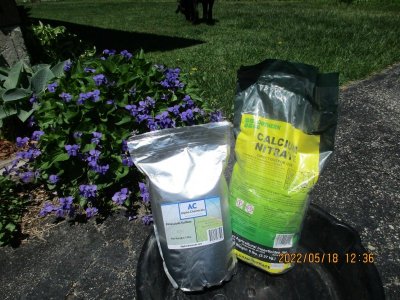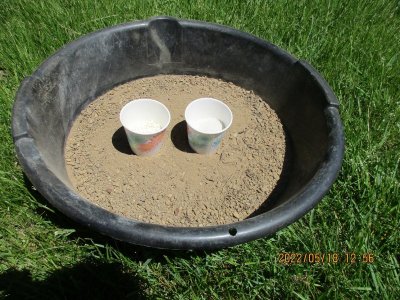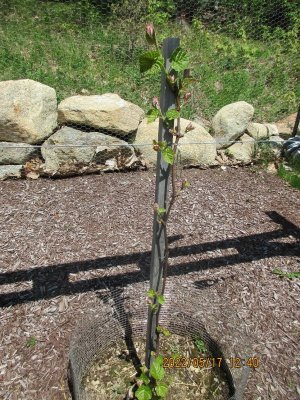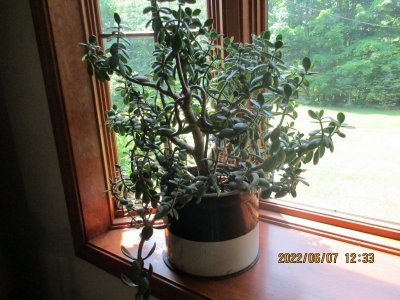The Fence
In years past, I volunteered as a docent at a local environmental research reserve. As an environmental scientist it was a natural fit for me and I enjoyed being able to share this beautiful and interesting location with our visitors.
One of the many research projects being conducted at that time was a long-term study involving Japanese barberry . . . an invasive plant that can destroy native forests by crowding out the understory flora.
The researcher maintained a number of study plots for different experiments. Around each plot he had erected an eight-foot high fence to keep deer from interfering with the plant growth within. After a very short time, however, he had to add another four feet if wire to the top of the fence because deer were jumping over the original eight-foot high barrier!
Compared to those study plots, our vineyard is tiny. The fenced area will measure only 20 feet by nine feet. Because of the small size and the trellis within, I’m fairly confident that a six-foot fence will keep the deer out. Fairly … confident …
I’m planning to use seven steel t-posts and galvanized chicken wire to build the fence. Because of buried rocks, I have little hope that the fenced area will be exactly rectangular or the posts perfectly straight, but I’m hopeful that it will serve the purpose until I can come up with a better solution.
On my first attempt each post hits rock, but after trying a few nearby locations they all go in far enough to completely bury the anchor plate … all but one. That one is on a corner and it must be directly over a VERY BIG rock. It will need a guy wire to support it.
The chicken wire goes up, er, well . . . the way chicken wire goes up but it’s not too bad. I’m using zip ties to attach the wire to the posts. I’ve come to love zip ties – they’re almost as useful as duct tape.
After a couple of days’ work the posts are all standing at their various angles, the wire is wavy, but at least the fence is up. I’ll consider that to be a small victory.
Some wisdom from the vineyard.
Until now I had never heard of a “post pounder”. This is an 18 pound steel tube that’s sealed at the top and has handles along each side. To use it, you slide the tube over the top of the post, grasp both handles, raise the tube about a foot, and then “vigorously” slam it down onto the top of the post. Repeat. Repeat. Repeat. Repeat . . .
View attachment 203498
Using this tool, I was able to accomplish something that would otherwise have been extremely difficult for me to do. Yes, if I hit a rock, it’s still a rock and I have to reposition the post. It still takes the same amount of kinetic force to move the stake through the soil but the post pounder greatly improves both the efficiency and the ergonomics of the task. So the post pounder doesn’t change what IS, but it does make what IS much easier to master.
Faith can have a similar effect but on a much grander scale. Faith does not alter God’s plan; what WAS and IS and IS TO BE. Rather, through it He enables us to fulfill our roles in that plan.
Ephesians 2:10 For we are his workmanship, created in Christ Jesus for good works, which God prepared beforehand, that we should walk in them.
 Thank you!
Thank you!

